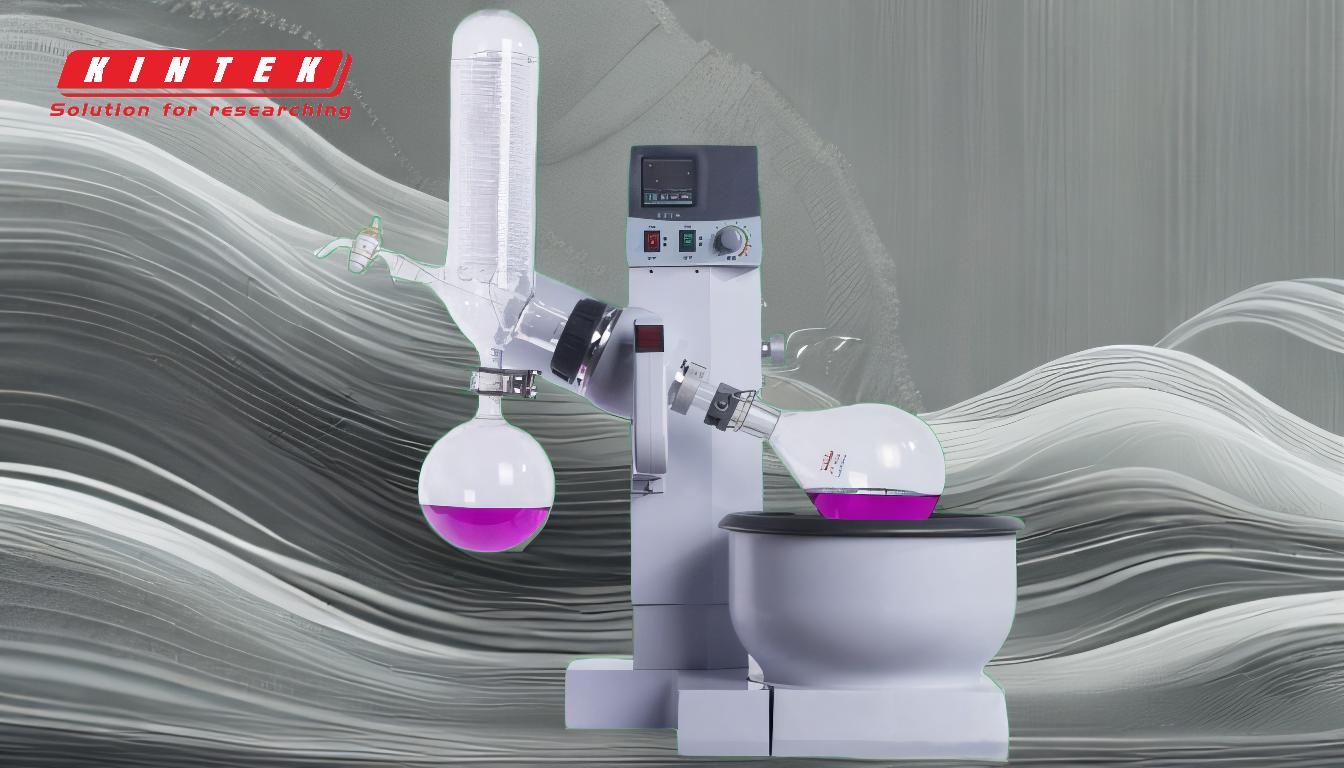The time it takes to use a rotary evaporator (rotovap) depends on several factors, including the solvent being evaporated, the volume of the sample, the efficiency of the system, and the operational parameters such as rotation speed, vacuum level, and water bath temperature. Generally, the process can take anywhere from a few minutes to several hours. Key factors influencing the evaporation time include the system's vacuum degree, heating bath temperature, rotation speed, and cooling efficiency. Optimizing these parameters can significantly reduce the time required, but care must be taken to avoid damaging heat-sensitive samples or overloading the system.
Key Points Explained:

-
Factors Influencing Evaporation Time:
- Solvent Type: Different solvents have varying boiling points and evaporation rates. For example, ethanol evaporates faster than water under the same conditions.
- Sample Volume: Larger volumes take longer to evaporate due to the increased amount of solvent that needs to be removed.
- System Efficiency: The design and condition of the rotary evaporator, including the vacuum pump, condenser, and seals, play a significant role in determining how quickly the solvent can be evaporated.
-
Operational Parameters:
- Vacuum Level: A higher vacuum reduces the boiling point of the solvent, allowing it to evaporate more quickly. However, the vacuum must be balanced with the system's pressure resistance to avoid damage.
- Heating Bath Temperature: Increasing the temperature of the water bath speeds up evaporation, but excessive heat can damage heat-sensitive samples.
- Rotation Speed: Faster rotation increases the surface area of the solvent, enhancing evaporation. However, excessively high speeds can cause mechanical damage or reduce efficiency.
- Cooling Efficiency: Effective condensation of the evaporated solvent is crucial. Lower condenser temperatures and efficient cooling systems improve recovery rates and reduce evaporation time.
-
Optimization Strategies:
- Balancing Parameters: Adjusting the vacuum level, heating bath temperature, and rotation speed to find the optimal balance can significantly reduce evaporation time without compromising sample integrity.
- Equipment Maintenance: Regular maintenance of the vacuum pump, seals, and condenser ensures the system operates at peak efficiency, reducing evaporation time.
- Use of Appropriate Vessels: Selecting the right size and type of evaporation flask for the sample volume and solvent type can improve evaporation rates.
-
Practical Considerations:
- Heat-Sensitive Samples: For samples that are sensitive to heat, lower temperatures and slower evaporation rates may be necessary, extending the overall time.
- Batch Processing: For large volumes, processing in smaller batches can be more efficient and reduce the total time required.
- Monitoring and Adjustment: Continuously monitoring the process and making real-time adjustments to the parameters can help optimize evaporation time.
In summary, the time required to use a rotary evaporator varies widely based on the specific conditions and requirements of the process. By understanding and optimizing the key factors influencing evaporation, users can achieve efficient and effective solvent removal while protecting the integrity of their samples.
Summary Table:
| Factor | Impact on Evaporation Time |
|---|---|
| Solvent Type | Different solvents have varying boiling points and evaporation rates (e.g., ethanol > water). |
| Sample Volume | Larger volumes require more time due to increased solvent removal. |
| Vacuum Level | Higher vacuum reduces boiling points, speeding up evaporation. |
| Heating Bath Temp | Higher temperatures accelerate evaporation but risk damaging heat-sensitive samples. |
| Rotation Speed | Faster rotation increases surface area, enhancing evaporation. |
| Cooling Efficiency | Efficient cooling systems improve recovery rates and reduce evaporation time. |
Need help optimizing your rotary evaporator process? Contact our experts today for tailored solutions!









